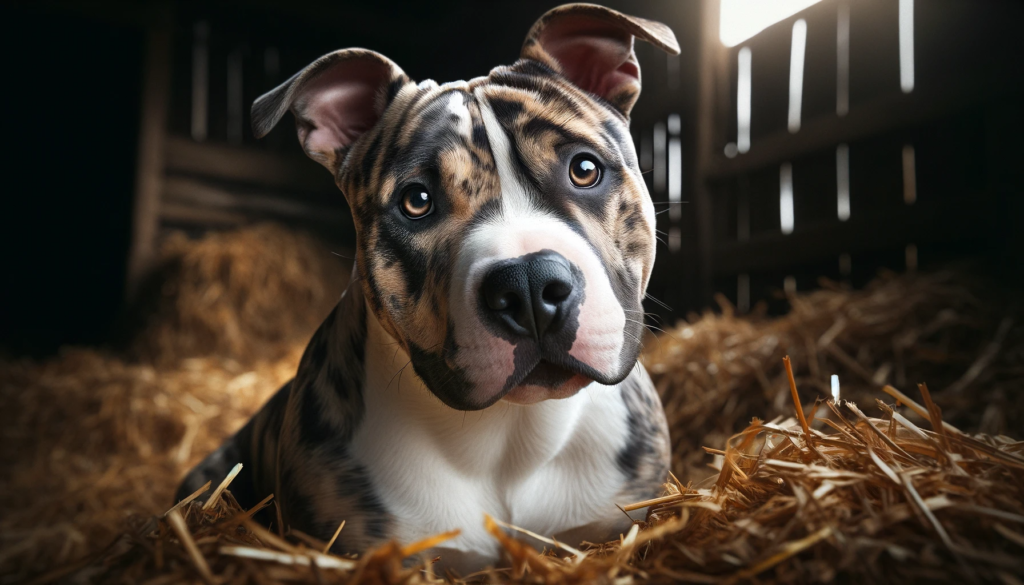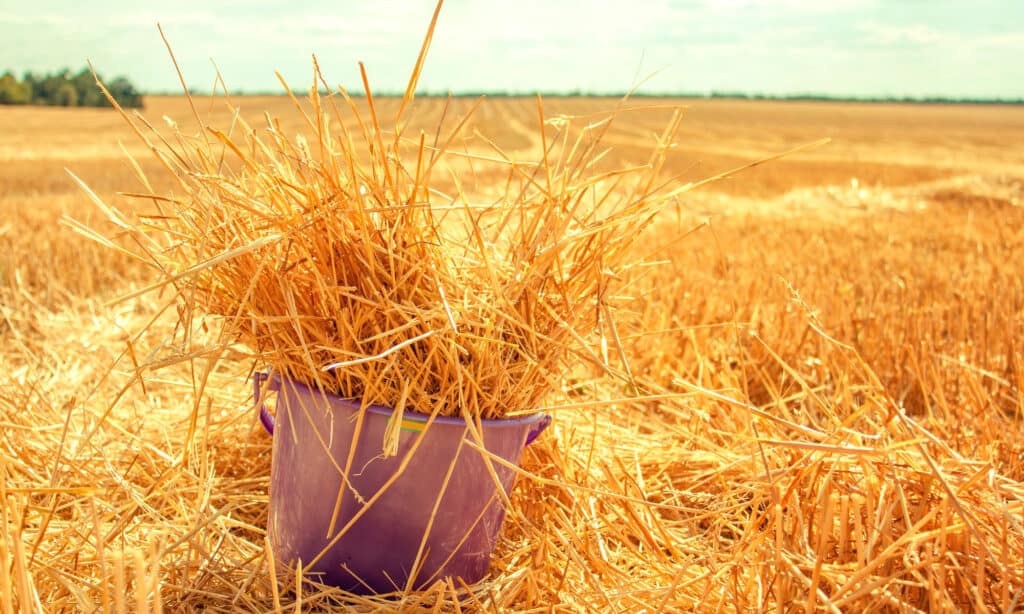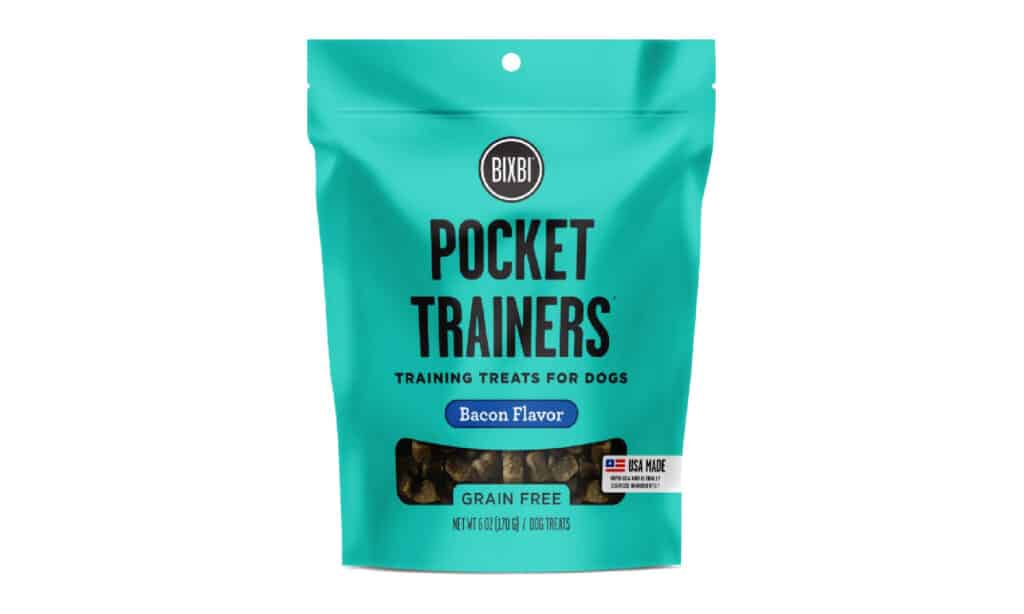As a dog owner, it’s natural to keep your pup safe and healthy. While we don’t typically think of hay as something we want to feed our dogs, often we use hay as bedding in their doghouses or sleeping areas. One question that often comes up is whether or not dogs can eat hay. After all, it’s a common food source for other animals like horses and cows. In this blog, we’ll explore the topic of dogs and hay in more detail to help you make informed decisions about what to feed your canine companion.

What Is Hay?
Hay is essentially dried grass or legume that is widely used as animal feed. It’s made by cutting, drying, and storing grass or legume crops until they reach a moisture content of around 15%, which helps preserve their nutritional value and make them easier to store and transport.
There are different types of hay available, including timothy, alfalfa, and clover, each with its own unique nutritional composition. Is hay safe for dogs? It’s commonly fed to horses, cows, goats and sheep, but learn more in this blog.
While hay can be a good source of fiber for some animals, it’s important to take into account the specific nutritional requirements of dogs before including it in their diet.
Can Dogs Eat Hay?
As a dog owner, you may be wondering whether it’s safe for your furry friend to eat hay. While hay is commonly fed to other animals like horses and cows, dogs have different nutritional needs and digestive systems.
The good news is that in small quantities, hay is generally safe for dogs to consume. Hay can provide a source of fiber, which is important for maintaining healthy digestion and bowel movements in dogs. However, it’s important to keep in mind that hay is not a complete or balanced food source for dogs and should not be relied upon as their sole source of nutrition.
It’s also important to note that some dogs may have allergies or sensitivities to certain types of hay. Seek veterinary help if your dog has vomiting, diarrhea, or appetite changes after eating hay.

Harmful Ingredients in Hay:
While hay is generally considered safe for dogs to eat in small quantities, there are some potential risks and harmful effects to be aware of.
Firstly, hay can be a choking hazard for dogs, especially if it’s not cut into small enough pieces or if your dog tends to eat quickly without chewing properly. Eating hay can cause choking, gagging, and blockages, leading to serious medical emergencies.
Additionally, some types of hay can contain mold, dust, or other allergens that can cause respiratory issues or allergic reactions in dogs. Ingesting moldy hay can also lead to digestive upset and illness.
Finally, feeding your dog too much hay can lead to nutritional imbalances and deficiencies, as hay alone is not a complete source of nutrition for dogs. This can lead to health issues such as malnutrition, weight loss, or even chronic health problems over time.
Safe Ingredients in Hay:
Yes, there are some safe and beneficial aspects of dogs eating hay in moderation.
One of the main benefits of feeding hay to dogs is that it can provide a good source of fiber, which is important for maintaining healthy digestion and bowel movements. Fiber can help to regulate the digestive system and prevent constipation or other digestive issues.
Hay can also provide a healthy outlet for dogs that enjoy chewing or gnawing on things. Chewing on hay can help to satisfy your dog’s natural urge to chew, which can be beneficial for their dental health by promoting teeth cleaning and reducing the risk of dental problems.
In addition, some types of hay may contain vitamins and minerals that are beneficial for dogs, such as vitamin C and calcium. Hay isn’t a complete food source for dogs. Feed it in moderation with nutritionally complete dog food.

What Signs To Watch For If Your Dog Accidentally Ate A Lot of Hay?
If your dog accidentally eats a large amount of hay, it’s important to keep an eye out for any potential signs of discomfort or illness. Some common symptoms to watch out for include vomiting, diarrhea, and changes in bowel movements. If your dog seems more lethargic than usual or lacks energy, this could also be a sign that they are not feeling well due to eating too much hay.
In more severe cases, eating too much hay can lead to more serious symptoms such as abdominal pain, dehydration, and loss of appetite. Act fast and seek veterinary care if your dog shows severe symptoms or distress after eating hay.
It’s always best to be cautious when introducing new foods or treats into your dog’s diet, and hay is no exception. While small amounts of hay can be a safe and beneficial addition to your dog’s diet, too much can lead to potential health issues. Watch for symptoms of distress and seek vet care if your dog ingests too much hay.
When or If You Should Go To The Vet?
If your dog is showing signs of illness or discomfort after eating hay, it’s important to keep a close eye on them and seek veterinary care if necessary.
If your dog is experiencing mild symptoms such as vomiting or diarrhea, you can try to manage their symptoms at home by providing them with plenty of water and monitoring their condition closely. See a vet if your dog’s symptoms worsen or don’t improve. Proper care and treatment is necessary.
If your dog is exhibiting more severe symptoms such as abdominal pain, dehydration, or a loss of appetite, it’s essential to seek veterinary care as soon as possible. These symptoms could indicate a more serious condition or illness that requires immediate attention to prevent further complications.
If you’re unsure whether or not to take your dog to the vet, it’s always better to err on the side of caution and seek professional advice. Vet advice can help manage dog symptoms and determine if further treatment is needed. Remember, your dog’s health and well-being should always come first.

Safe Dog-Friendly Alternative to Hay as Bedding:
If you’re looking for safe and healthy alternatives to hay for your dog, there are several options to consider. Here are some dog-friendly alternatives to hay:
- Straw: Straw is similar to hay but is made from the stems of grain plants instead of grass or legumes. It can provide a comfortable and safe bedding option for dogs and can also be used as a chew toy.
- Shredded Paper: Shredded paper is a safe, comfortable bedding option for dogs as it can be ingested without harm. Make sure to use non-toxic paper and avoid glossy or coated paper, which can be harmful to dogs.
- Pine Shavings: Pine shavings are a popular bedding option for dogs and other small animals. They’re absorbent, easy to clean, and can help to control odors.
- Fleece Blankets: Fleece blankets can provide a soft and comfortable bedding option for dogs. They’re also easy to clean and can be washed in the washing machine.
- Grass Mats: Grass mats are made from dried grass and can provide a safe and natural chew toy for dogs. They’re also biodegradable and can be used as a bedding option for dogs.
Overall, there are several safe and healthy alternatives to hay that you can consider for your dog’s bedding. Consult with a vet before introducing new bedding or chew toys to your dog’s routine for their safety.
Healthy Store-Bought Options:
In conclusion, while hay can be a safe and beneficial addition to your dog’s diet in moderation, it’s important to keep in mind that it’s not a complete or balanced food source for dogs. Hay should be given in small quantities and alongside a well-balanced and nutritionally complete dog food.
If you’re considering using hay as bedding for your dog, it’s important to be cautious and monitor them closely for any signs of discomfort or illness. Safe alternatives to hay include straw, paper, pine shavings, fleece blankets, and grass mats for dog bedding.
Ultimately, the health and well-being of your dog should always be your top priority. By taking the time to research and choose safe and appropriate bedding and food options for your dog, you can help to ensure that they live a happy and healthy life. Consult your vet for personalized advice on feeding and caring for your dog.
~Lindsie


